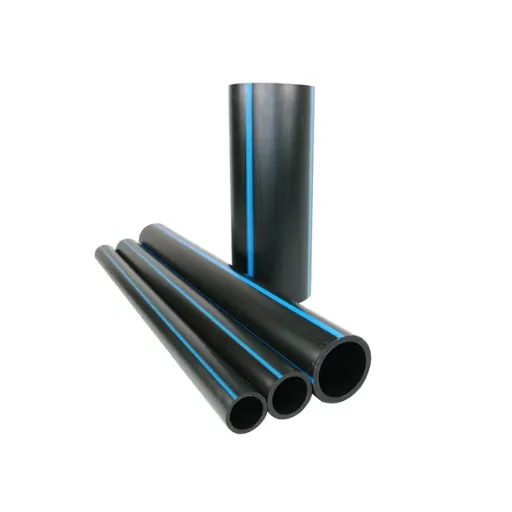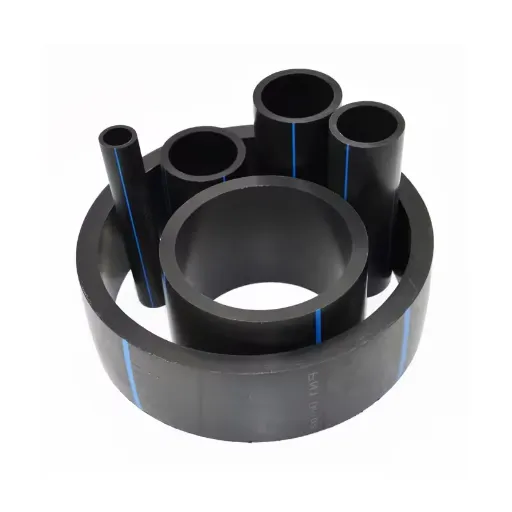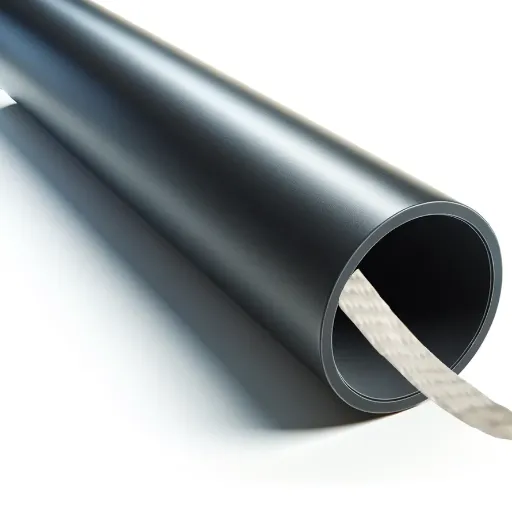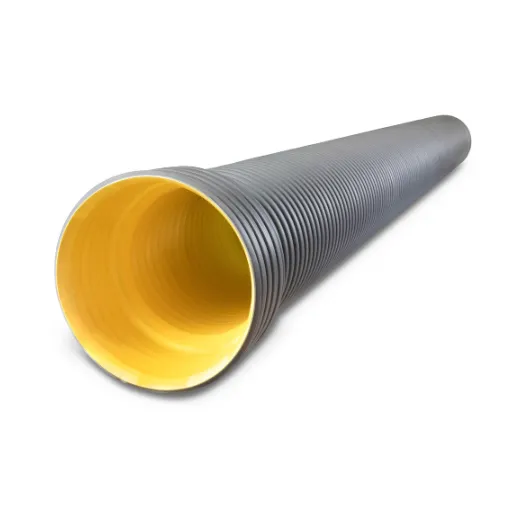When considering the construction of efficient and reliable water systems, selecting the correct piping material is very important. High-Density Polyethylene (HDPE) underground water pipes have started to be utilized as premier solutions in potable water and drainage applications, giving maximum durability, flexibility, and performance. Here we shall discuss what makes HDPE the ideal solution for your water management needs and its characteristics, advantages, and role in providing safe and durable infrastructure. For the contractors, engineers, or property owners wishing to make an informed decision, the following information should enable them to understand the benefits of HDPE pipes compared with conventional materials.
Understanding HDPE Pipes
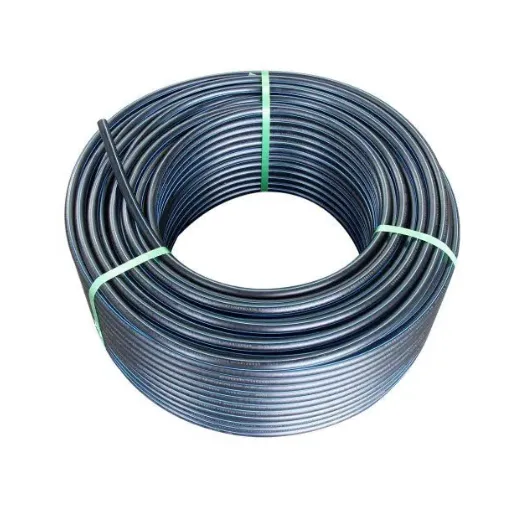
What is HDPE?
High-Density Polyethylene (HDPE) is a petroleum-based thermoplastic. Because of the high strength-to-density ratio of this material, it finds wide applications, especially in piping systems. It is lightweight and is not redundant as it presents good impact resistance with chemical and environmental exposures, UV radiation, or extreme temperatures.
The ductility, flexibility, and pressure resistance without cracking or breaking are some features of HDPE. All these make it suitable to carry water, gases, and other fluids in residential as well as industrial setup. Its non-corrosive nature ensures the pipe remains intact for a duration, thus reducing, to a large extent, the worries of leaks or system failures as compared to conventional materials like metal or concrete.
Besides, HDPE is environmentally friendly and recyclable, aligning with global prospects of sustainability. With a long service life and lesser maintenance, it can be expected to have a lower lifecycle cost and thus a better option to provide water management systems and infrastructure projects. Owing to its versatility and strength, HDPE is capable of offering solutions to industries all over the world.
Characteristics of High-Density Polyethylene
This polymer possesses an excellent strength-to-density ratio, making it very robust. Accordingly, it is given lacquer drying care and would generally not be used in any application that requires fragility. It can absorb impacts, and significant pressure may be required to deform it in piping systems, through containers, and across other industrial applications. Its tensile properties give it reliability for use in adverse environments.
HDPE is highly corrosion and chemical resistant so that it can stand exposure to rather harsh chemicals without breaking down. This makes it useful for industries concerned with chemical handling, waste management, or any other areas with high humidity levels. In addition, it does not absorb any moisture, giving it a very high degree of durability in these applications.
Another quality of HDPE is an ease in molding and flexibility during manufacturing. This transforms it into a material with immense adaptability as it can be designed into many shapes and forms used by industries. At the same time, HDPE is recyclable, which makes it aid environmental sustainability by not generating wastes and small initiatives supporting production and use in an eco-friendly manner.
Types of HDPE Pipes and Fittings
HDPE pipes and fittings are available in numerous types to serve different industries and applications. Some of the commonly available types include standard HDPE pipe, perforated HDPE pipe, and corrugated HDPE pipe. Standard HDPE pipes are used for water distribution, gas transfer, and sewage systems because they are strong, lightweight, and resistant to corrosion. Perforated HDPE pipes are normally used in drainage systems so that water is either released or held up in the soil or landscape. Corrugated HDPE pipes are famous for their durability and strength and are used for stormwater drainage and irrigation systems.
HDPE Fitting Types:
- Butt fusion fittings: Make seamless joints by heating and fusing the ends of the pipe, thereby creating a very strong and leak-proof joint
- Electrofusion fittings: Give a reliable and accurate joining methodology by passing an electric current through an embedded heating coil to weld the fitting to the pipe
- Compression fittings: Provide an easy, quick joining method for pipes that do not require any special welding equipment. Suitable for smaller applications
Whether it is agriculture, construction, or municipal infrastructure, these types of HDPE pipes and fittings are used in a wide variety of applications. They are selected according to project specifications, such as pressure rating, temperature level, environmental conditions, and so on. With so many alternatives available for design and installation, HDPE pipes and fittings continue to rank as an excellent sustainable and efficient choice for piping.
Advantages of HDPE Pipes for Underground Water Lines
Durability and Longevity
The HDPE pipes, celebrated for their operational durability and longevity, become soils and sands for the underground water line. At the environmental and working front, cast and well-built with materials, they perform aptly. Here are five details illustrating the durability and longevity of these pipes:
🛡️ Corrosion Resistance
Unlike metal pipes, HDPE pipes are naturally resistant to corrosion and chemical reaction and hence have a longer period of service in acidic or alkaline soils.
🔧 Flexibility
Being flexible to an extent, HDPE pipes can resist ground shifts or earthquakes to crack or break, thereby enhancing long-term performance.
💪 Resistance to Abrasion
In interior hydraulic applications, HDPE pipes can resist abrasion produced by the transport of the abrasive medium ensuring their structural integrity and good performance for several decades in more demanding environments.
⏰ Lifespan of Over 50 Years
Properly installed HDPE pipes can be expected to function efficiently and last over 50 years, thereby significantly reducing the costs involved with replacement and maintenance.
☀️ UV and Weather Resistance
Special formulations of HDPE include the UV stabilizer ingredient to give the pipes protection from deterioration due to obviously prolonged exposure to sunlight and thus can be considered durable in areas where it is exposed.
These features indeed make HDPE pipes resilient, and good economical choices for water piping underground.
Resistance to Corrosion and Chemicals
High-density polyethylene pipes have one really important property: they exhibit high corrosion resistance and formocompatibility against a large spectrum of chemicals. Metals get rusted in time or undergo some form of chemical reaction; HDPE pipes maintain strength under adverse conditions. Some examples of corrosion and chemical resistance have been enumerated here:
| Resistance Type | Description |
|---|---|
| 🧪 Acid Resistance | Against many acids, HDPE pipes mark their presence, including sulfuric acid and hydrochloric acid, giving them the application in industries. |
| ⚗️ Base Resistance | Strong alkali solutions, such as sodium hydroxide, are withstood by them so that they may be durable in chemical processing environments. |
| 🌊 Saltwater Resistance | In marine conditions, HDPE pipes resist corrosion by salts and deterioration caused by long exposure to saltwater. |
| 🔬 Oxidation Resistance | HDPE pipes are made with antioxidants for additional resistance to oxidizing agents that would degrade other materials. |
| 🧴 Organic Solvent Resistance | Common industrial solvents like alcohols and ketones cannot compromise the very operation of HDPE pipes and thus guarantee good working in various industries. |
It is because of its vast resistance to chemicals and corrosion that HDPE becomes the favorite choice in the fields of agriculture, industrial processing, and water supply systems.
Cost-Effectiveness Over Time
Investment in HDPE pipes turns out to be one of the least expensive alternatives for industries and infrastructure works in the long term. Here are five important details which depict cost-effectiveness:
- ${counter(item)}
Lower Installation Charges: Being lightweight, HDPE pipes make for easier transportation and installation than heavy materials such as steel or concrete, with less manpower required. - ${counter(item)}
Minimal Repair Downtime: Having durability and resistance to corrosion, HDPE pipes should be low-cost when it comes to frequent repairs or replacement. - ${counter(item)}
Extended Service Life: HDPE pipes normally exceed 50-100 years in operation, thus reducing overhauls and replacements. - ${counter(item)}
Energy Efficiency: The smooth interior of the HDPE pipes minimizes the friction; consequently, less energy is required for fluid transport and operational cost goes down. - ${counter(item)}
Reduced Environmental Costs: An HDPE pipe is recyclable and environment friendly, thus supporting sustainable practices and sparing any extra disposal costs.
The environment-friendly nature of the HDPE pipes, together with their reliable performance, qualifies them to be an economic choice for long-term use.
Applications of HDPE Pipes
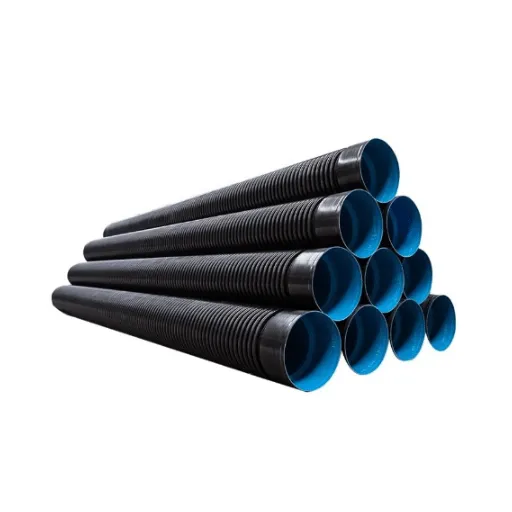
Use in Potable Water Supply
HDPE pipes enjoy wide application in potable water distribution. Some five facts establish their suitability for potable water supply:
🛡️Corrosion Resistance
HDPE pipes do not undergo any corrosion. They do not react with water or chemicals, so the water maintains its purity throughout the life period of the pipes.
🔧Leak-Free Joints
HDPE pipes are joined by fusion welding, which yields leak-proof joints. These joints greatly help in reducing water loss and in the efficient distribution of water.
⏰Long Life Span
HDPE pipes can remain under function and environmental condition for nearly 50-100 years and hence make a good long-lasting investment for water supply infrastructure over time.
💪Flexible and Strong
These pipes can endure high pressure and various ground conditions, creating an ideal complex potable water supply network for both urban and rural areas.
✅Regulatory Compliance
HDPE pipes are manufactured keeping in view international standards meant for the safety of drinking water so that treated water is not contaminated during the process of conveyance.
This combination of durability, safety, and efficiency makes HDPE pipes most suited for potable water supply systems worldwide.
HDPE Pipes in Drainage Systems
HDPE pipes, defined by their high strength and excellent performance in wastewater and stormwater handling, are used in drainage systems, presenting numerous advantages that guarantee efficient and dependable drainage solutions. Following are the five main advantages HDPE pipes offer to drainage systems:
- 🛡️ Corrosion Resistance: These pipes resist corrosion from both chemical and environmental effects and while carrying wastewater so that they do not get damaged through the harsh substances which may sometimes be present in drainage systems.
- 🔧 Flexibility and Strength: Being flexible, HDPE pipes adapt to irregular terrain and soil movements so that they do not crack and break, thus ensuring a longer time of service even in adverse environments.
- 🔒 Leak-Free Joints: Despite being lightweight, HDPE pipes are joined using advanced heat fusion technology that forms a fused system that is leak-proof, minimizing water loss, hence reducing potential contaminations from outside.
- 💧 High Flow Capacity: With smooth internal walls, HDPE pipes perform hydraulically, maintaining high flow capacity and other factors that preclude blockages and sediment buildups.
- 🌱 Environmental Sustainable: HDPE pipes are recyclable and have a longer life span over which they help ease the seasonal environmental effects of drainage systems, and cost-efficiently so.
The aforementioned advantages indicate why HDPE pipes are respected and favored for drainage applications, at both household and industrial levels.
Industrial Applications of Polyethylene Pipes
Polyethylene pipes find wide applications in different industries due to their durability, flexibility, and corrosion resistance. Here are five industrial applications for polyethylene pipes:
💧 Water Supply Systems
Polyethylene pipes are used mostly in transporting potable water all over the world, owing to their non-toxic nature and conformance to standards. Clean water must be supplied to prevent any form of contamination. Their smooth internal surface causes less friction and sediment deposit.
⛽ Gas Distribution
The HDPE pipes are preferred for gas distribution because they can sustain high pressure and resist gas permeation or leakage. Fusion joining of HDPE pipe systems guarantees no leaks and offers safety and efficiencies in gas transportation.
🚰 Sewage and Wastewater Management
Wastewater treatment and sewer systems of various kinds require pipes that have good chemical resistance and can withstand harsh conditions. The glueing process is unsuitable for these pipes: they need to be flexible to help install them in uneven terrains and thus reduce the risks they might face of cracking under pressure.
🌾 Agricultural Irrigation
Polyethylene pipes find applications in irrigation through drip and sprinkler systems because they are light in weight, resist UV degradation, and can handle varying pressures. In this way, they ensure that water is distributed towards the land optimally, hence improving agricultural yield.
🧪 Industrial Chemical Transport
Chemical plants use polyethylene pipes to transport corrosive and hazardous substances safely. Their resistance to most chemicals guarantees the longer service life of the pipes and maintains their integrity even in adverse conditions within an industrial set-up.
Given that the above shafts are used in different processes, this diversity underpins the versatility and reliability of polyethylene pipes in industrial infrastructure.
Choosing HDPE Pipes for Underground Installations
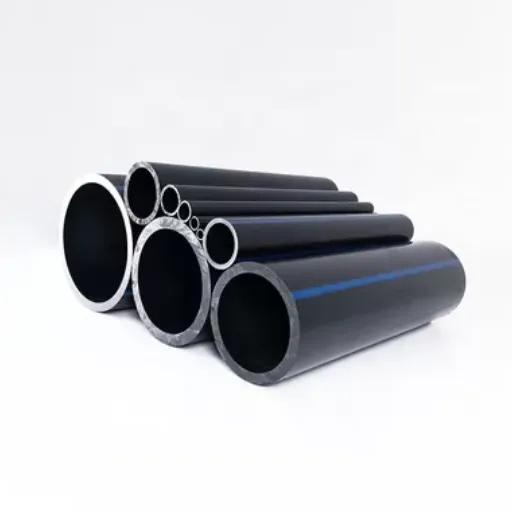
Factors to Consider When Selecting Pipe Size
Determining the precise size of pipe necessary for efficient long-term installation is essential. When it comes to choosing the diameters of HDPE pipes, certain considerations must be taken into account:
📊 Flow Rate Requirements
The flow rate of the substance flowing through the pipe directly influences its diameter. Higher flow rates may call for larger pipe sizes to minimize pressure drop and preserve the operational efficiency of the system.
⚡ Operating Pressure
The pressure inside the pipe should correspond with the pressure rating of the pipe. In doing so, the pipe can sustain the intended pressure loads without any risk of failure. If a pipe is selected for a higher pressure than that which it was actually rated for, it could fail under the stress imposed on it in operation.
🌍 External Conditions
Soil considerations and external loads as well as proximity to other infrastructural installations should be considered. For underground installations, pipe size must serve both internal transport requirements and external considerations such as ground pressures and potential traffic loads.
🌡️ Temperature Tolerance
Depending upon the liquid and climate, the pipe material and size must be selected to allow for thermal expansion or contraction. HDPE pipes are really considered suitable across an extensive range of temperatures.
📏 Length of the Pipeline
Longer lengths bring about further concerns of friction loss. More careful assessment of pipe diameters will ensure that these losses do not consume unnecessary energy.
💰 Viability and Budget
In some applications, bigger pipes may give more performance, but at the same time, they will impose higher installation and material costs. The pipe size, therefore, has to be an economic compromise of its functional necessity.
Looking into these factors as a whole will guarantee an efficient and sustainable underground piping system. A further consult on detailed specifications and industry standards will help select the right HDPE pipe size for all types of use.
Best Practices for Installation and Fusion of HDPE Pipe Fittings
HDPE-pipe installation and fusion are notoriously important, since the downstream repair and maintenance activities can only be affected by a downstream installation with utmost perfection. Adhering to given practices can ensure that under strenuous conditions, the system remains reliable and leak-free.
-
${counter(step-counter)}
Site Preparation
The subsequent soil is prepared for receiving the piping system. The trench must be graded evenly and should not contain sharp objects or debris that can damage the pipe. Use appropriate bedding material; sand or fine gravel is preferred.
-
${counter(step-counter)}
Pipe Handling and Storage
HDPE pipes and fittings should be handled with care to avoid scratches or gouges that reduce the pipe’s structural integrity. Place the pipes on flat surfaces and avoid long exposure to direct sunlight to prevent degradation due to UV rays.
-
${counter(step-counter)}
Fusion Procedures
Two common methods of joining HDPE pipes are butt fusion and electrofusion. Ensure proper temperature, pressure, and time per the instructions of the manufacturer, so the bonding between the pipes is strong and uniform. Always use a calibrated fusion machine, further ensuring the surfaces are clean and free from contaminants.
-
${counter(step-counter)}
Inspection of Fusion Joints
After fusion, inspect for uniform bead formation and alignment. Imperfect fusion joining might result in leaking or weak points in a system. Destructive or non-destructive quality testing is done as per project requirements.
-
${counter(step-counter)}
Allowing for Thermal Expansion and Contraction
HDPE pipes are flexible but subject to thermal expansion and contraction. Proper anchoring, expansion loops, or offsets must consider temperature variations so as to avoid any undue stress on the pipe.
-
${counter(step-counter)}
Pressure Testing Before Commissioning
Pressure testing should be performed post-installation to identify any leakages or weaknesses present. This treatment actually verifies the integrity of the system and ensures that it satisfies operational specifications prior to putting into actual use.
In keeping with these best practices, contractors and engineers would provide a quality product that lasts-aHDPE piping system. State-of-the-art techniques and rigid pursuit of standards thus enable HDPE pipes to be optimally applied across industries.
Maintenance Tips for HDPE Underground Water Systems
Maintaining HDPE underground water systems is paramount if the intention is to ensure their long-standing performance and reliability. Initially, inspection schedules should be established so that the HDPE systems can be examined for signs of damage, such as surface deformation, joint misalignment, or any shifting of the pipelines caused by soil movement. Furthermore, acoustic monitoring or pressure decay tests can be performed to detect underground leaks that may be imperceptible to direct observation.
🔧 Key Maintenance Practices:
- Drainage Maintenance: It is therefore very important that drainage around the pipeline is maintained at a level that would not allow any undue saturation or softening of the soil against the pipes.
- Regular Cleaning: Then the system has to be cleaned on a periodic basis to remove deposits of sediments or debris that could impair the flow efficiency.
- Freeze Protection: Further, it is pertinent for regions subject to freezing temperature to avoid stagnation of water within the pipes so as to prevent any related expansion damage.
- Record Keeping: Maintaining strong records on installations, repairs, and maintenance activities helps with planning for preventive interventions.
- Technology Integration: Also, best practices can include the use of GPS-based systems that map underground networks for better location identification of sections requiring attention, thereby minimizing excavation and repair efforts.
In addition, staying aware of technological advances, such as liner systems or new coatings, can further shield HDPE pipelines and extend their service life.
Reasons to Choose HDPE Pipes
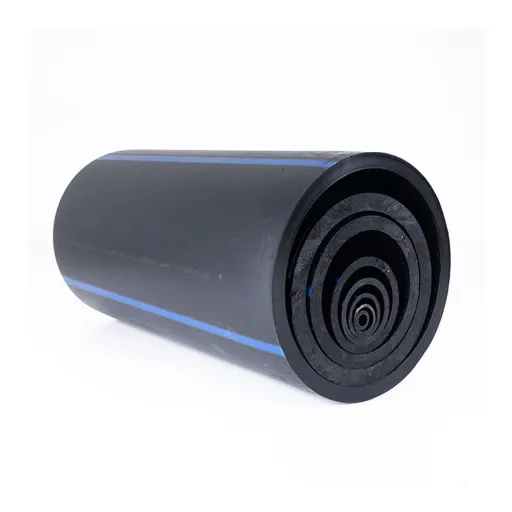
Environmental Benefits of Using HDPE
From a personal outlook, HDPE pipe stands out for me due to its environmentally friendly nature. To begin with, being among the most durable and longest-lasting pipes, HDPE pipes require less frequent replacements, thus minimizing waste generation. Their resistance to corrosion enables them to resist adverse natural conditions without deterioration, thus lesser raw materials are consumed for their production over time. The more duration they are in service, the more sustainable practice we have in infrastructure development.
🌱 Sustainability
Another major advantage is that HDPE pipes are lightweight and flexible, requiring less energy for transport and installation. These lighter pipes demand less burning of fuels while being transported, consequently reducing carbon emissions.
♻️ Recyclability
Finally, HDPE is a recyclable material fitting in with global efforts to reduce waste and create circular economies. Thus, used HDPE pipes may be repurposed or recycled into new products, at least reducing their contributions to landfill.
🌍 Reduced Environmental Impact
Besides, their flexibility needs less excavation work, giving a chance to preserve the immediate ecosystem and thereby reducing the carbon footprint from the installation activities. All these factors make HDPE pipes energy-efficient and green.
I believe that these things make HDPE pipes a sustainable solution for present and future generations.
Safety Features of High-Density Polyethylene
High-Density Polyethylene (HDPE) presents a number of safety features for which it is widely used and respected as a dependable material. To begin with, HDPE resists all kinds of chemical corrosion, with an ability to transport several substances, including hazardous chemicals, without any menace of leaking or contamination. The fact that it is non-toxic makes it suitable for potable water systems and food containers, thereby meeting stringent standards for safety all over the world.
🛡️ Key Safety Features:
High Impact Strength
HDPE has a high impact strength, hitting the least possibility of damaging in a force stress. Apart from this, it is resistant against cracking from environmental stress or extended exposure to UV radiation when it is compounded with stabilizers.
Fire Protection
Fire protection is just another important realm where HDPE shows reliability. It is flammable but exhibits high ignition resistance and is self-extinguished after flame-retardant treatments according to standard methods.
Safe Handling
Finally, in terms of industrial use, HDPE is lightweight, yet strong. It lends itself to safe handling and installation, a way of preventing injuries on the job.
Manufacturing Safety
It is manufactured under strict safety provisions that allow it to support sustainable and nonhazardous industrial practices.
All these, in a nutshell, are the features that make HDPE the material one would go for in any situation where safety and long-term reliability are demanded.
Case Studies: Successful Implementations of HDPE Pipes
🏙️ Urban Water Supply Systems in Developing Regions
HDPE pipes have revolutionized the water-supply situation in underdeveloped areas. One such success story is from a Sub-Saharan African project set up to provide an urban water supply network using HDPE piping. Light in weight and easy to install, HDPE pipes facilitated their deployment in areas that had remained deprived of potable water. Also, being resistant to corrosion, HDPE pipes proclaim an enhanced lifespan for the system, thus minimizing maintenance and making the system reliable for the local populace.
🌾 Agricultural Irrigation into Arid Zones
An example of HDPE pipes being used well is in the design of agricultural irrigation systems in arid areas such as some parts of the Middle East. The flexibility of HDPE pipes has made it possible to develop drip irrigation systems which lead to lesser wastage of water and greater crop yields. These pipes are critical in areas of varying pressures and temperatures under such adverse weather and climate conditions, ensuring the water pressure is maintained during long-distance conveyance.
🏭 Mounting System in Harsh Environments
HDPE pipelines have shown spectacular performances under industrial conditions where the pipelines face aggressive chemicals and extreme temperatures. For example, a chemical plant in Southeast Asia replaced metals with HDPE pipes. It was owing to the chemical resistance properties of HDPE that they succeeded in preventing failure of the system due to corrosion, thus reducing downtime and saving costs for the plant.
🚰 Sewage and Drainage System in Urban Areas
Similarly, HDPE pipes have found successful implementation in urban areas for sewage and drainage systems. For example, a large European project procured HDPE piping to upgrade worn-out infrastructure. The smooth internal surface of HDPE pipes discouraged blockage and more efficient waste disposal. Also, the material resisted cracking even under heavy loads and thus suited densely populated cities having significant underground activity.
The case studies show the versatility and reliability of HDPE pipes for various applications. The consistent performance in different conditions is why HDPE is gaining popularity as an absolute essential material for all modern-day infrastructure development.
References
-
Analyzing Field Performance of Steel-Reinforced HDPE Pipes
This study discusses the performance of steel-reinforced HDPE pipes during installation and under traffic loading. -
Developed Pipe Bursting Specifications Using HDPE
This paper focuses on pipe bursting specifications and their application with HDPE pipes in underground utility construction. -
Laboratory and Field Performance of Buried Steel-Reinforced HDPE Pipes
A detailed comparison of HDPE and steel-reinforced HDPE pipes based on installation and performance in shallow cover conditions. -
Evaluation and Development of Structurally Enhanced PVC Water Pipes
While focused on PVC, this dissertation provides insights into the challenges and alternatives in water utility pipelines, including HDPE. -
Critical Vertical Deflection of Buried HDPE Pipes
This research examines the structural behavior and deflection limits of buried HDPE pipes.
Frequently Asked Questions (FAQ)
Q: What is an HDPE underground water pipe?
A: An HDPE underground water pipe is a plastic pipe generated from high density polyethylene, being commonly used for water transportation underground. These pipes are considered ideal for different water applications due to their durability, corrosion resistance, and flexibility.
Q: How does HDPE clash with PVC pipes for underground use?
A: Though being both used for underground applications, the HDPE pipes offer much greater flexibility and cracking resistance than the PVC pipe. It can endure high-pressure applications that make it suitable for different water applications, including potable water and industrial water transportation.
Q: What are the methods for installing HDPE pipes?
A: Several methods can be used for laying HDPE pipes, including trenching, horizontal directional drilling, and pipe bursting. These methods provide for a relatively quick installation with less disruption to the surroundings.
Q: What benefits do HDPE drainage pipes have?
A: HDPE drainage pipes have several benefits: resistance against chemical leaching, a lightweight yet flexible design, and low installation cost. They are also used in controlling stormwater and wastewater to assure the quality of water in drainage systems.
Q: Can the pipes be recycled?
A: Yes, HDPE pipes can be recycled, hence, making them environment-friendly options. The recycled HDPE will usually be converted into making new pipes, thus reducing waste and also, lessening the usage of virgin material.
Q: What are the common diameters in HDPE pipes?
A: HDPE pipes come in various sizes. Dimensions generally range from half an inch to 63 inches. Pipe dimensions can change depending on their particular application, such as water mains or distribution of gases.
Q: How long is the life expectancy of underground water HDPE pipes?
A: HDPE underground water pipes are very long-lasting; over 50 years if given adequate installation and maintenance. The corrosion resistance is the key factor that contributes to the longevity of the service life.
Q: How do HDPE pipes ensure water quality?
A: HDPE pipes are manufactured from high-quality polyethylene material that does not leach harmful chemicals into the water. This feature ensures that the water transported through HDPE pipes maintains high quality, making them suitable for drinking water systems.
Q: What are the main features of HDPE pipes?
A: The most notable features of HDPE pipes include excellent flexibility, corrosion and chemical resistance, being lightweight in design, and the ability to withstand high pressure. These features render HDPE pipes suitable for quite a few underground applications, such as water and wastewater systems.



